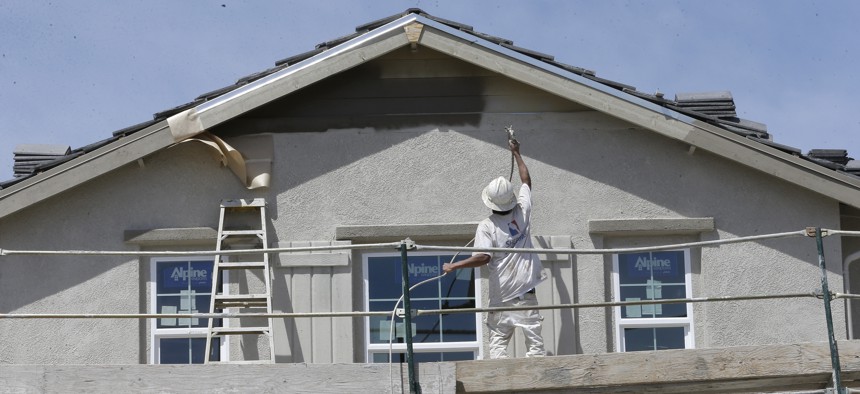U.S. Supreme Court Rejects Appeal of California Ruling on Lead Paint Remediation

The U.S. Supreme Court let stand a California court ruling that makes former lead paint manufacturers pay into a remediation fund for houses built before 1951. AP Photo
A coalition of cities and counties sued manufacturers under the state’s “public nuisance” law. They have won a $400 million fund to help treat housing.
The U.S Supreme Court let stand Monday a California court decision that forces former lead paint manufacturers to pay into a $400 million remediation fund sought by 10 counties and cities in the state.
The counties and cities—including Santa Clara County, Los Angeles County, San Francisco, San Diego and Oakland—sued in 2000, saying that the companies knew about the damaging effects of their product when used inside homes, but still promoted it before lead paint was banned from household use in 1978.
The lawsuit was filed under California’s “public nuisance” law, which has been used to tackle widespread problems that affect a whole community. Lead consumed by children can create long lasting health problems, including physical and cognitive delays. Kids eating pieces of chipped or peeled paint inside old untreated homes is a major way they are exposed to lead.
Lawyers for Santa Clara estimated that almost 39,000 children in the 10 jurisdictions covered by the lawsuit tested positive for lead poisoning between 2010 and 2014.
After a six-week trial in 2013, the local governments were successful, winning a verdict from Santa Clara County Judge James Kleinberg that would have required the companies to spend more than $1 billion to inspect and treat homes painted with lead paint going back to before 1981.
But an appellate court dialed back the judgment, saying the manufacturers would only be responsible for paint in homes built before 1951. The case was returned to the trial judge, who estimated the new amount owed by Sherwin-Williams Co., NL Industries and ConAgra Brands Inc. would be around $409 million, according to Bloomberg News.
Both companies asked the Supreme Court to take the case, but the court declined without comment.
In a joint statement, Sherwin-Williams and ConAgra noted to Bloomberg that the Supreme Court takes up just a small fraction of cases. "California’s decision is an outlier and at odds with courts across the country which have correctly held that companies should not be held retroactively liable for lawful conduct and truthful commercial speech decades after they took place,” they wrote.
NL Industries has been in talk with the plaintiffs about settling the case, the legal filings in the case note.
In asking the nation’s high court to take up the case, both Sherwin-Williams and ConAgra said they were being unfairly penalized for past advertising promoting a product that had been legal. This violated the companies’ First Amendment free speech rights, as well as due process, they asserted.
But the cities and counties countered that the case doesn’t raise any free speech claims, as the heart of their claims is that the companies in the past misled consumers about lead paints’ safety when they knew there were dangers. In his 2014 order, Kleinberg agreed that there was evidence the companies knew about the harm posed by lead, but continued to promote and sell the paint.
Laura Maggi is the Managing Editor of Government Executive's Route Fifty and is based in Washington, D.C.
NEXT STORY: Flu Season May Last Longer in Large Urban Areas, Study Says






